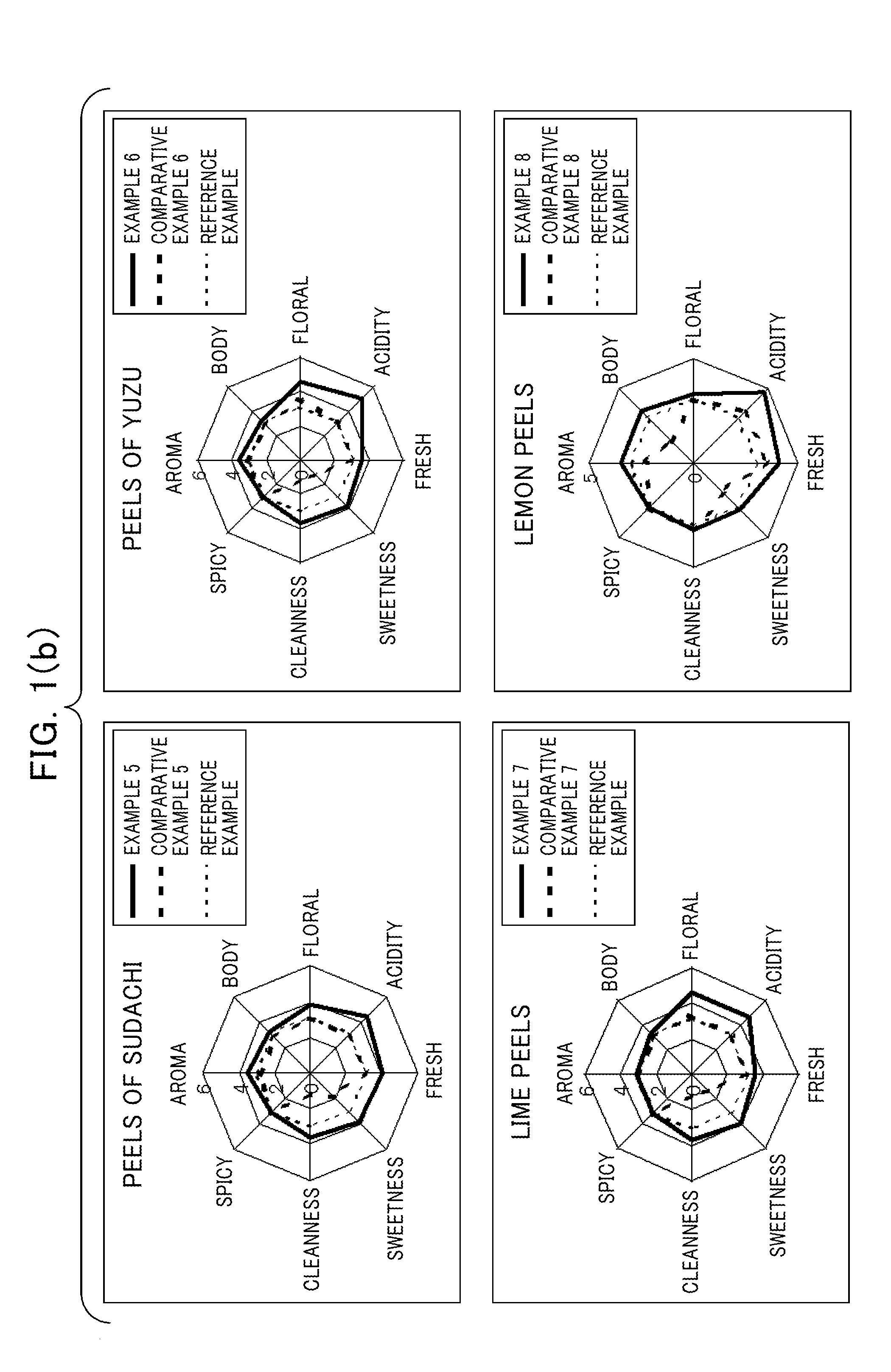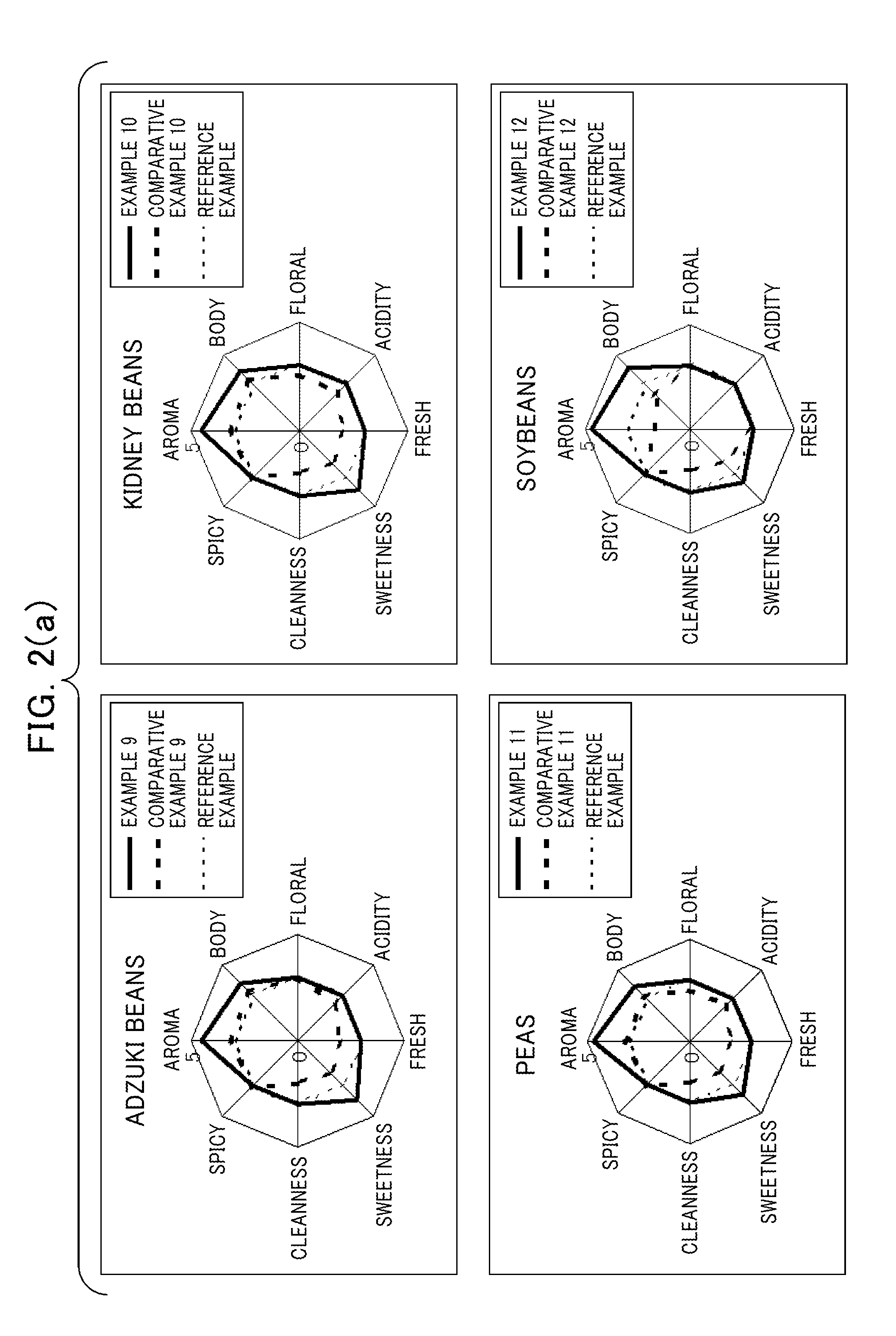Coffee extract
a technology of extracts and coffee, applied in the field of coffee extracts, can solve the problems that none of the beverages from the mixture of separately roasted raw materials has reached a satisfactory level in terms of flavor and taste, and achieve the effects of enhanced acidity, enhanced sweetness, and enhanced sweetness
- Summary
- Abstract
- Description
- Claims
- Application Information
AI Technical Summary
Benefits of technology
Problems solved by technology
Method used
Image
Examples
example 1
[0102]Grapefruit peels were cut into pieces, 7 mm on each side, with an ultrasonic cutter. The cut pieces of the peels were subjected to a drying process in a shelf dryer. At this time, the water content of the peels was 13%. Subsequently, three kilograms of green coffee beans were roasted with a coffee roaster. Approximately 11 minutes later, when the product temperature of the coffee beans reached 220° C., 120 grams of dry-processed pieces of the grapefruit peels were put into the roaster, and were mixed with the coffee beans during roasting. The mixture was roasted for an additional three minutes while controlling the amount of heat in order to keep the product temperature at 210° C. The roasted mixture thus obtained was discharged onto a cooling plate, and was cooled.
example 2
[0103]Mandarin orange peels were cut into pieces, 7 mm on each side, with an ultrasonic cutter. The cut pieces of the peels were subjected to a drying process in a shelf dryer. At this time, the water content of the peels was 13%. Subsequently, three kilograms of green coffee beans were roasted with a coffee roaster. Approximately 11 minutes later, when the product temperature of the coffee beans reached 220° C., 60 grams of dry-processed pieces of the mandarin orange peels were put into the roaster, and were mixed with the coffee beans during roasting. The mixture was roasted for an additional two minutes while controlling the amount of heat in order to keep the product temperature at 210° C. The roasted mixture thus obtained was discharged onto a cooling plate, and was cooled.
example 3
[0104]Orange peels were cut into pieces, 7 mm on each side, with an ultrasonic cutter. The cut pieces of the peels were subjected to a drying process in a shelf dryer. At this time, the water content of the peels was 12%. Subsequently, three kilograms of green coffee beans were roasted with a coffee roaster. Approximately 11 minutes later, when the product temperature of the coffee beans reached 220° C., 60 grams of dry-processed pieces of the orange peels were put into the roaster, and were mixed with the coffee beans during roasting. The mixture was roasted for an additional three minutes while controlling the amount of heat in order to keep the product temperature at 210° C. The roasted mixture thus obtained was discharged onto a cooling plate, and was cooled.
PUM
 Login to View More
Login to View More Abstract
Description
Claims
Application Information
 Login to View More
Login to View More - R&D
- Intellectual Property
- Life Sciences
- Materials
- Tech Scout
- Unparalleled Data Quality
- Higher Quality Content
- 60% Fewer Hallucinations
Browse by: Latest US Patents, China's latest patents, Technical Efficacy Thesaurus, Application Domain, Technology Topic, Popular Technical Reports.
© 2025 PatSnap. All rights reserved.Legal|Privacy policy|Modern Slavery Act Transparency Statement|Sitemap|About US| Contact US: help@patsnap.com



